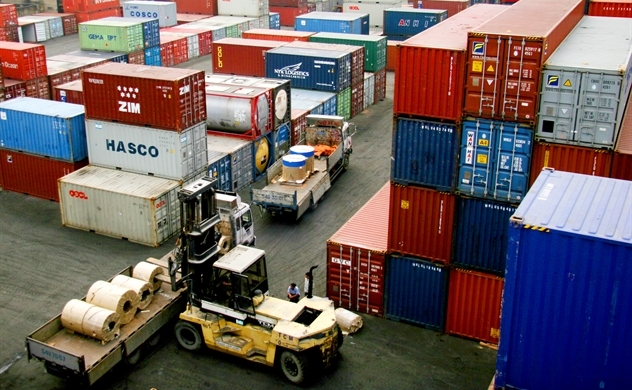Financing Net Zero
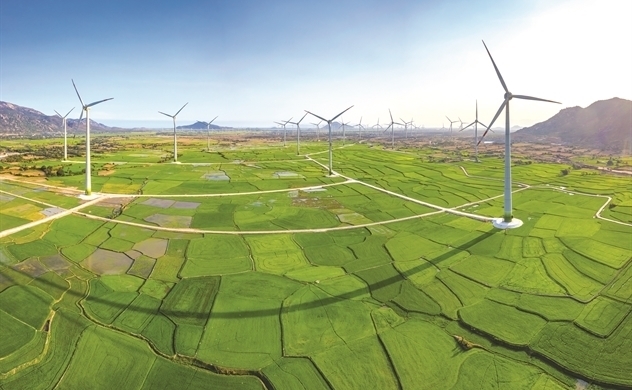
Photo by Shutterstocks.
One of the main takeaways from COP28 in Dubai last month, was not only that the world needs trillions more dollars to effectively tackle climate change but that climate financing will be critical.
Vietnam, which announced in Dubai its plan to mobilize $15.5 billion in global concession loans under the Just Energy Transition Partnership (JTEP), was a keenly interested party to the recurring climate finance debate throughout the conference that encompassed food security, land use, impacts on public health, and energy transition.
While there was clear evolution in understanding of climate financing during the event, there was little evolution in the low level of commitment which remained stated in the "end-of-summit" final document signed by delegates as "insufficient". It confirmed a widening gap in adaption finance and recognised that the commitment to doubling financing needed significant scaling up. A report published during COP found that only 16% of global climate finance needs are being met and only 13 countries signed up to the "UAE Leaders" Declaration on a Global Climate Finance Framework’ which aims to make finance available, accessible and affordable. Of these two were in Asia Pacific – India and the Philippines.
The framework aims to unlock the investment opportunity of climate action, mobilize domestic resources, free-up fiscal space for climate action, unlock "a highway of private finance", broaden concessional finance, and deliver high-integrity carbon markets. Governments are encouraged to remove obstacles and incentivize private sector finance in emerging markets.
The framework reflects the evolution in understanding of "climate finance" which has moved on from simply investing in renewable energy to a more comprehensive concept that includes broad engagement around transition plans, advanced climate risk management, innovative green financial instruments, scaling-up voluntary carbon markets, innovative international taxation and much more.
Vietnam is acutely aware of both the need for a sophisticated multilayered approach to achieve Net Zero and the risks from the widening gap in financing.
The problem is that Vietnamese banks and developers don’t have the financial capacity to meet future investment needs. Achieving Net Zero can only happen if Vietnam mobilizes international funding.
Energy sector observers have described the significance of JETP to Vietnam’s Net Zero strategy as being similar to Vietnam’s entry into the WTO in 2007 which led to an overhaul of the legislative system and promulgation of landmark laws such as the Enterprise Law, Investment Law and the Law on Intellectual Property which had not existed before. Its securing of financing support from the G7 countries and the GFANZ alliance to reduce fossil fuel use and shift to renewables, is clear opportunity for the country but it still represents just 12 per cent of the investment the country requires to fulfil its Net Zero commitments by 2050, according to Power Development Plan VIII.
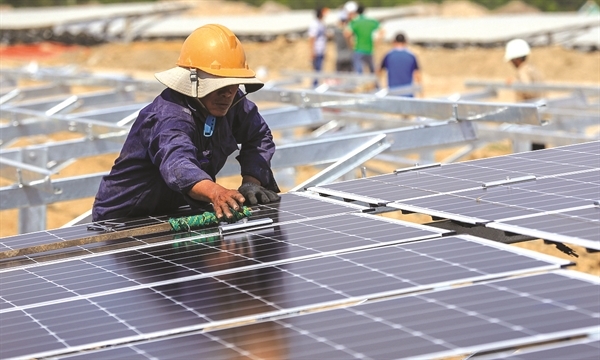 |
| Vietnam is acutely aware of both the need for a sophisticated multilayered approach to achieve Net Zero. |
For many observers, JETP is a springboard to attract more private investment by developing a set of comprehensive domestic policies and improving its institutions to create an attractive environment for renewable and low-carbon energy investment, development and adoption as well as broader societal adaptation to improve energy efficiency, retrain workforces and create modern low carbon-intensity cities.
If Vietnam gets its strategy and plans right for JETP it will pave the way for future support through to 2050. That means not only taking a hard look at managing the external perceptions of Vietnam investment risk and the potential barriers for investment, but also at proactive marketing of Vietnam as an attractive, secure and low-risk destination for investors.
Key to Success
It remains early days for JTEP in Vietnam but the two keys to success and follow-on investment will be:
1. Further fiscal, regulatory reform: Creating an internal fiscal, regulatory and commercial ecosystem that attracts investment, further simplifying approval processes while giving comfort on long term risk.
2. Selling Vietnam internationally: A global marketing programme to ensure that potential investors are aware of those factors and invest. Overcoming entrenched negative country perceptions needs to be addressed as part of that effort.
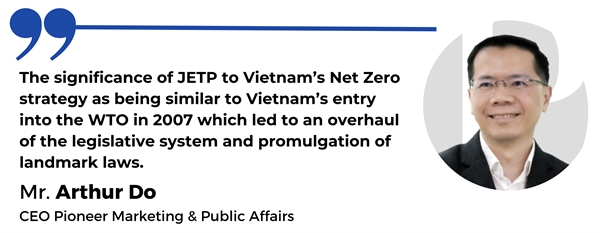 |
For the first priority, reforming current policy and regulation to increase investor interest and confidence, the following key areas have been identified by investors, analysts and observers, including the International Union for Conservation of Nature and Natural Resources (IUCN):
Investors have shown concerns about the Feed-in Tariff (FIT) programme for solar energy projects in Vietnam which has been active since 2017. The reason for these concerns are the terms of the Power Purchase Agreement (PPA) offered by Electricity Vietnam (EVN) which are deemed unbankable. The standard PPA gives EVN the power to stop purchasing for an indefinite period, which is not in line with global best practices. Vietnamese companies have been able to reduce this risk by engaging with key political stakeholders, but international companies are unable to do the same. This has resulted in most of the investments in renewables being made by national companies. However, achieving the required increase in renewables capacity will require international support, despite the progress made so far. To give an idea, half of the committed $15.5 billion funds for JETP are expected to come from commercial banks. Only those banks that accept Vietnam's PPAs with the current terms will approve the investment and disburse the funds.
FIT is an effective tool to encourage the growth of renewable energy in the initial stages of development, but once the electricity market is fully established, it makes sense to leave the pricing to the market. A lot of climate financing debate at COP28 was around the importance of removing subsidies to encourage investment and build sustainable market-driven systems.
The Ministry of Trade and Industry has been working on developing a competitive power generation market (VCGM) since 2012, but to date, only the power generation market has been partially completed, and renewables are excluded due to the FIT and high unit costs. The wholesale market is still in the process of formation, and the retail market has not yet taken shape. It is essential to focus on developing the electricity market entirely, especially the electricity generation market, to ease investors' anxiety over price uncertainty. In the interim, the draft Direct Power Purchase Agreement currently under review by the government to implement on a pilot basis may offer a solution to overcome this hurdle and provide something close to a purchase guarantee, which is more aligned with global best practices.
Registering a new project involves numerous departments from initial project approval to integration into the provincial level plans to land permitting, and so on. The process can be difficult to navigate for international investors without local connections. Investors have commented on a lack of transparency, uniformity, and consistency in government policies and decisions on commercial projects. Land acquisition difficulties, poor infrastructure and shortage of skilled labour are also cited while corruption concerns remain despite concerted government action on this subject.
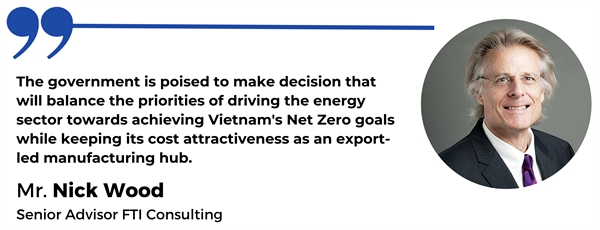 |
However, even the most attractive policies and regulations will not lead to a queue of investors lining up at the front door. There are a plethora of competing investment programs and initiatives globally involving international banks, governments, multilaterals and investors all connected with climate financing and many in competition for the same pool of funding, not least rival JETP programmes in South Africa and Indonesia with more JETP programmes in the pipeline, due to be announced soon.
There is clear recognition in current JETP Resource Mobilization Plan, announced by Prime Minister Pham Minh Chinh at COP28, for consulting broad national stakeholder groups to enable the development of inclusive plans that benefit society and build understanding and support. This needs to be combined with the requirement to proactively profile and differentiate Vietnam internationally as a low-risk attractive destination. FTI Consulting has been involved in a number of programmes to achieve that countries, working closely with national and city governments and other stakeholders.
Vietnam has the advantage of a 35-year track record of success with FDI that contributes 70-80% of the country's annual export earnings (excluding crude oil). The government's strategic priority to attract quality FDI is a testament to its commitment to becoming an industrialized economy by 2045. With a keen understanding of the benefits and drawbacks of regulations governing investment in the energy sector, the government is poised to make decision that will balance the priorities of driving the energy sector towards achieving Vietnam's Net Zero goals while keeping its cost attractiveness as an export-led manufacturing hub.

 TIẾNG VIỆT
TIẾNG VIỆT 




